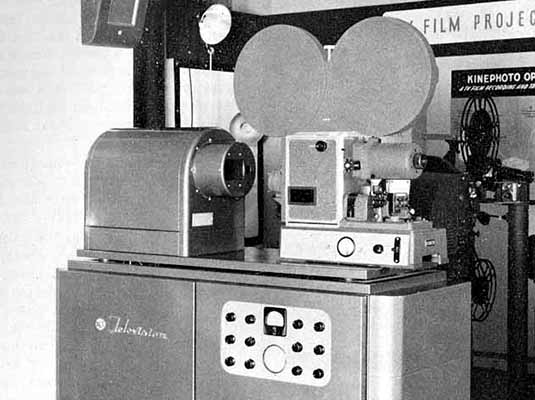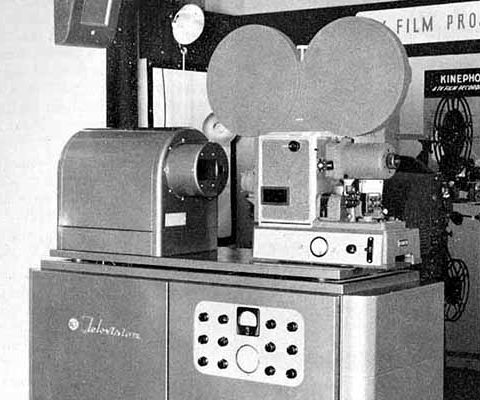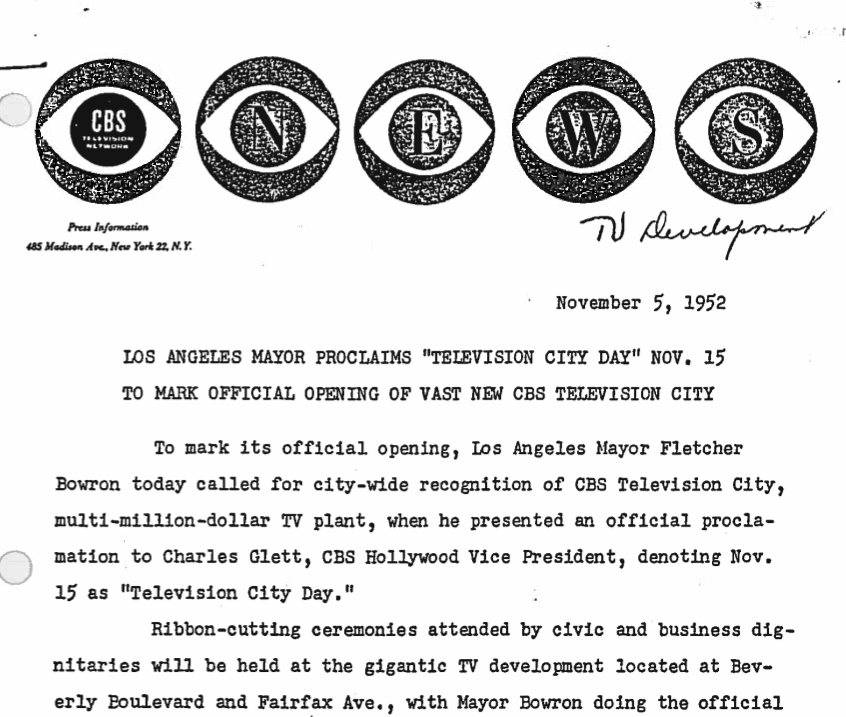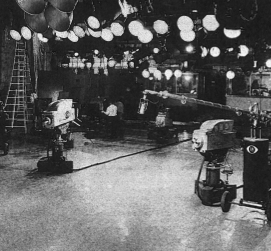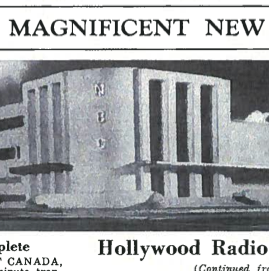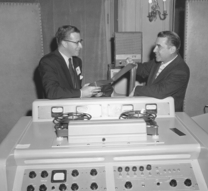1950: NBC Converts Studio 8H For Television
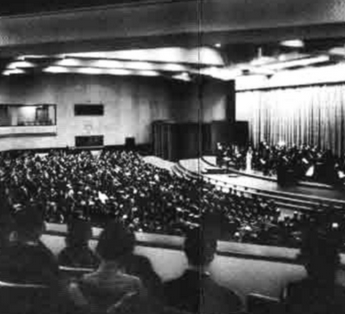
NBC’s announcement that the RCA Building’s largest studio would be making the switch to a new medium. This August 11, 1950 memo also mentions that Studios 3A and 3B will have finished conversion by Labor Day of 1950.
1948: NBC Sums Up The Year
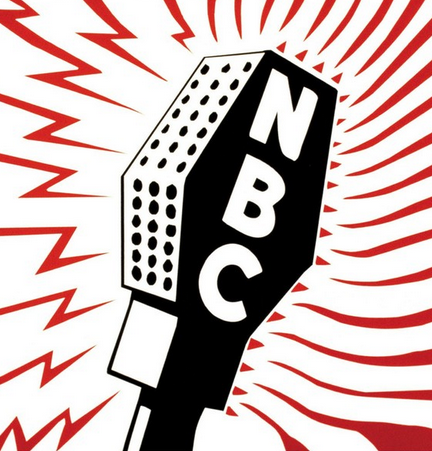
NBC takes a look at the many big advances it made in 1948, like increasing the size of the TV network from 4 to 25 stations, introducing Kinescopes and much more.
1931: Constructing NBC’s 711 Fifth Avene Radio Studios

A look at how NBC’s radio studios at 711 Fifth Avenue were designed and constructed. Before the move to 30 Rockefeller Plaza in 1933, NBC’s called 711 Fifth Avenue home for five years, although they had custom built this location only 5 years before. While still crowded into their first office and studio location at WEAF, in the AT&T Building on 19th Street, they were making big plans, and here they are.
Building NBC Studios 6A And 6B

A 1942 RCA Review look at the design and construction of NBC’s brand new, twin sixth-floor studios at Radio City. Built for radio, but planned with an eye on the future of television.
“The NBC Inhouse Mobile Units? YEP!”
NBC was televising shows from a few of their radio studios before they were converted to TV studios.
This photo was taken in Studio 6A on October 5, 1949 during a radio-TV simulcast of ‘Break The Bank’. There were four in house “mobile units”…the red, green, blue and yellow units, and each had three TK30s and a set of portable scoop lights.
The reason “mobile units” is in parentheses is because these were hybrid units that didn’t use a truck. Instead, the cameras were cabled to an existing TV control room there in 30 Rock.
At the time this photo was taken, only 3H, 8G and 6B had been converted from radio to television, and by that I mean those studios had their own control rooms, a new staging area with the floor seats removed and overhead light grids. But, 6A, 8H, 3A and 3B did have TV camera cable connectors and were used as television studios with the images routed to other existing control rooms.
With these four in house units, shows could be done from all over the building and remember, many of them were only 15 minutes, so that meant a lot of locations were necessary to go from one to the next. With a rehearsal, some of the units could move between studios and be ready to go on another show in about an hour.
At times, these units were actually in service with a truck doing broadcasts from some of the many NBC theater locations before they were converted to television studios.
Below, NBC veteran Frank Vierling looks back on the transformation of NBC Studio 3A from radio to television.
The Early History of WEAF…NBC Radio’s Flagship Station

A rare document looks at the earliest days of the station that NBC bought from AT&T, which we now know WNBC. It was the flagship station in New York, on which the NBC Red Network was based, and later, the NBC Radio Network.
RARE! NBC Television Studio Technique, 1940
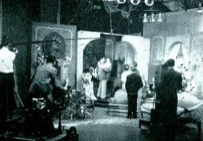
As NBC continued to refine its efforts toward commercial broadcasting’s debut, here’s what its staff had distilled on the subject of studio technique. This was written by NBC’s first studio cameraman, Albert Protzman, and this gives us a first hand account of the lessons learned in NBC Studio 3H, the first home of electronic television.
NBC – Recent Television Developments, 1940
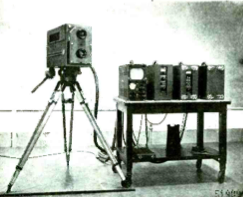
From none other than Vladimir Zworykin, and R. E. Shelby, here is an engineer’s dream come true…a full report on the state of television in 1940. BUT…at the start is a very interesting historical look back on how they got there, which highlights things that Dr. Zworykin believes to be milestones…including the work or Filo T. Farnsworht! Glad he gave credit, where credit is due.
NBC Television Lighting, 1940
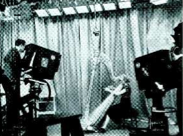
Fabled NBC Studio 3H proved not to be only a testing ground for the new electronic cameras, but a testing ground for all things television! From scenery to lighting, it all had to be worked out, and 3H was where it was done. Lighting directors had to know television shots, and the close up camera was at the same time, their best friend, and worst enemy. A fascinating read.
The Planning & Design of NBC Studio 3H…Home Of Electronic Television

This is TV MEGA HISTORY! In 1935, RCA leaned forward into the development and testing of fully electronic television. The testing had to be done in a real TV studio, but since there were none…it was up to them to design and build the first ever television studio. From 1937, here is the detailed report on how it was done.
September 15, 1938…NBC Debuts TV’s First Live Remote Show
September 15, 1938…NBC Debuts TV’s First Live Remote Show
On December 12, 1937, the world’s first electronic television remote units were delivered by RCA to NBC in New York City. The dual vehicle system, consisting two, 26 foot buses included one for production and one for transmission. The production bus provided two portable single-lens Iconoscope cameras and the support equipment. The transmission bus contained the 177 MHz transmitter with a 50 foot antenna which could relay a remote pickup to the Empire State Building from as far away as 25 miles.
The units were field tested for about six months before being returned to RCA’s Camden plant for modifications in the synchronizing equipment. Another modification was the installation of an coaxial feed out the transmitter truck, which allowed them to shoot at 30 Rock’s sunken ice skating rink.
The trucks came back in late August, and on September 15, 1938, W2XBS broadcast the first “Man On The Street” episode, by interviewing passers-by in Rockefeller Plaza (via the new coax). It is thought that the “Man On The Street” interviews were done once a week on W2XBS, up until the 1939 World’s Fair opened in New York.
In 1935, a “man on the street” show called “Vox Pop” came to NBC’s Blue radio network and is thought to be the inspiration for the W2XBS remotes. Although there were still very few sets in use, the 15 minute show was a good work out for the crews and trucks.
By the time the 1939 World’s Fair came to town, NBC had a lot of experience with the units and used them heavily at the Fair.
THE PHOTOS, up top is a shot taken just above the ice skating rink, an episode of the NBC/W2XBS “Man On The Street” series is done live with one camera on the ground, and the other on top of the truck. This photo is possibly the Sept 15, 1938 debut. Below is a photo of a monitor, shows NBC head of programming Warren Wade on the left and is speaking with an RCA salesman about the future of television. Wade is the man who gave the OK to Howdy Doody. These two are in the photo up top, and this is possibly on the debut show.
NBC Broadcast Operations, Program Schedule Sheets, 1949-51
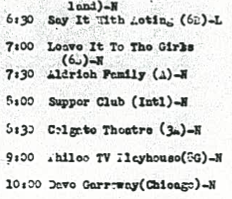
Four pages of Operations Sheets from NBC Television’s early days. This is the best ever guide to see which studios were being used at a time when radio and TV were sharing space at 30 Rock, and looking for studio space around the city.
Here are some keys to the Abbreviations here, so you can better understand what is going on. First, the -L is for Local and -N is for Network. Studios A, B, C were live studios at NBC’s Uptown Studios at 106 Street and F was the film projection studio there. 3H, 3A, 3B, 6A, 6B, 8G and 8H are at 30 Rock. Intl = The international Theater, Cen = The Center Theater, Hud = The Hudson Theater. CHI means the show is being done at NBC in Chicago, same for Wash = Washington D.C. and PHIL = a feed from Philadelphia. Notice “Camel News Caravan”, and some others are (C & F) which means the show is live with some film inserts.
The “SNL” Stages Layout & 3 Time Lapse Videos…
A little further down are links to 3 great time lapse videos that show you how “active” Studio 8H is during each episode of “Saturday Night Live”, but we will start with a rare look at a stage map for the show.
If you have wondered how Studio 8H is arranged for the hive of action that happens in 90 minutes, here is the answer. Of course, the written in sketch names change from week to week, but the stage areas stay the same.
To acclimate you, the south wall is to the left (49th Street) and the north wall to the right (50th Street). The wall where homebase is, is the west wall on the 6th Avenue side. At the bottom is the area where the bleachers are, but they wrap around on the north and south wall sides too.
At the bottom, you see the opening between stages 5 and 4C…this is the tunnel under the bleachers that leads to the page desk area and the dressing rooms. As you’ll see in one of the videos, this is a very busy area at showtime too. By the way, stage 2 is where the musical guests always perform, with the SNL house band at homebase. Where you see the “Three Dog Night, Control Audio” written in, that is the retractable tongue where the opening monologue is done, as well as “Weekend Update”.
Notice that some sketches are stacked in front of others, and that scenery is “pealed off” as the show progresses. Having seen this done live, you would be amazed at how many stage hands are setting and striking scenes during the show. It is ballet at it’s best!
Here are the 3 video links of the time lapsed action in Studio 8H… home of the best of the best in live television. Enjoy and share! -Bobby Ellerbee
https://www.youtube.com/watch?v=i72I9NNTTM0 2014 Time Lapse
https://www.youtube.com/watch?v=PU8k2hoCr2w 2009 Time Lapse
https://www.youtube.com/watch?v=3oRRYJs-Ec0 Page Area Load In/Load Out
September 13, 1947…The RCA Kinescope Machine Debuts
September 13, 1947…The RCA Kinescope Machine Debuts
In association with Dumont, Kodak and RCA announced the developed a special film camera to shoot directly off a TV screen. This was the first “time shifting” technology to come to television. Nine years later, video tape would become the second.
Officially titled, the “Eastman Kodak Television Recording Camera”, a Kinescope recorder was basically a special 16mm film camera mounted in a large box aimed at a high quality monochrome video monitor. All things considered the Kinescope made high quality, and respectable TV recordings.
The Kinescope was quite the clever device. It’s film camera ran at a speed of 24 fps. Because the TV image repeated at 60 fields interlaced (30 fps) the film had to move intermittently between video frames and then be rock steady during exposure.
The pull-down period for the film frame was during the vertical interval of less than 2 mili seconds, which was something no mechanical contraption could do at the time.
Together, Dumont, RCA and Eastman Kodak found various ways around the problem by creating a novel shutter system that used an extra six frames of the 30 frame video signal to move the film. This action integrated the video half-images into what seemed like smooth 24 fps film pictures.
Of course, the kines were played back on air using film chains running at 24 fps, so the conversion to film was complete and seamless. Until videotape recorders made their debut, the Kinescope was the only way to transmit delayed television programs that were produced live.
